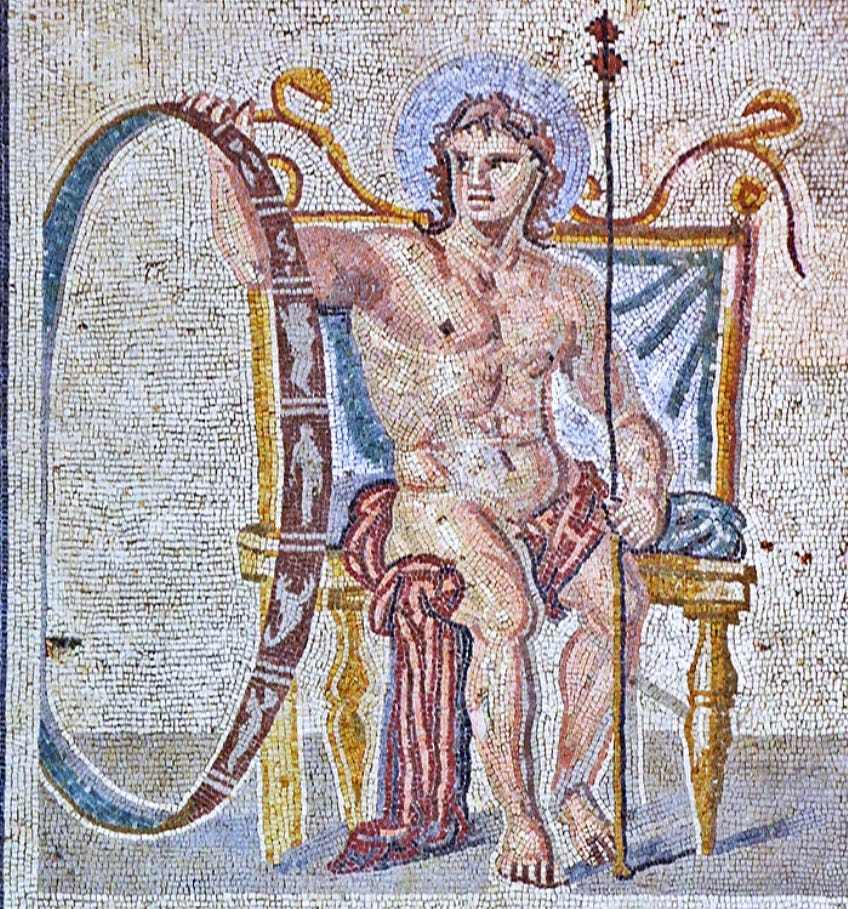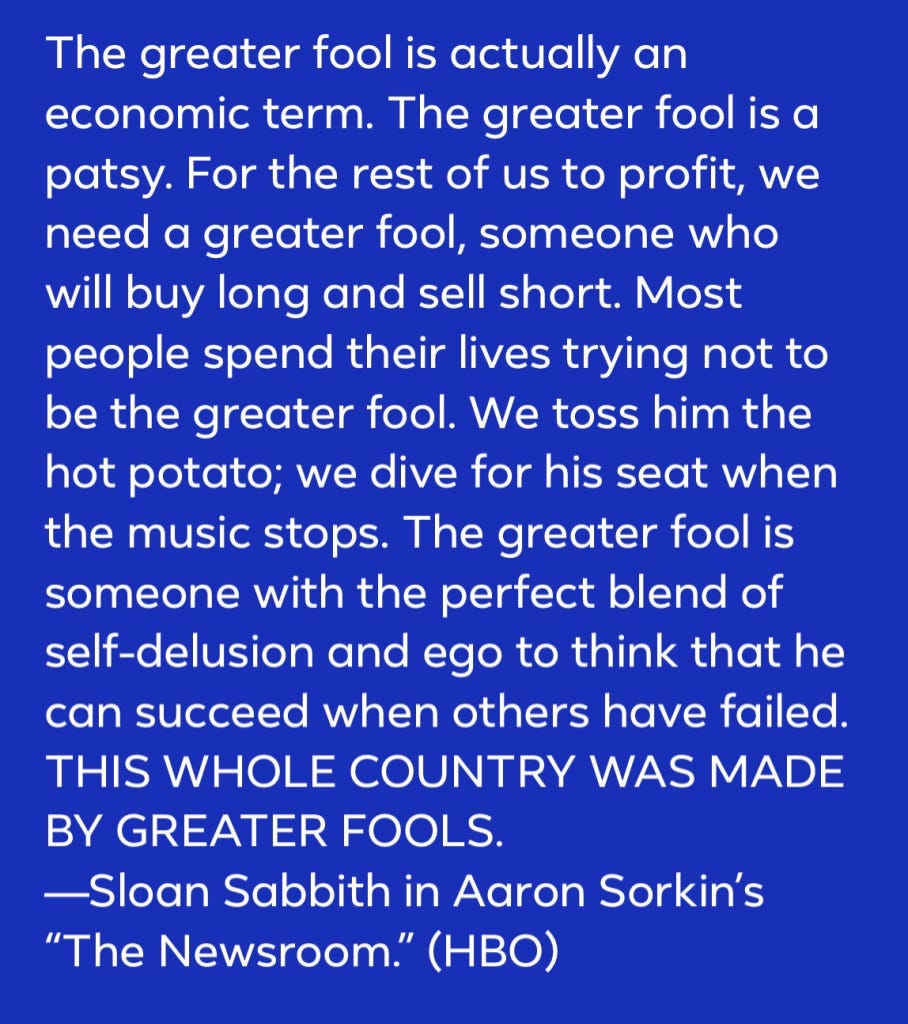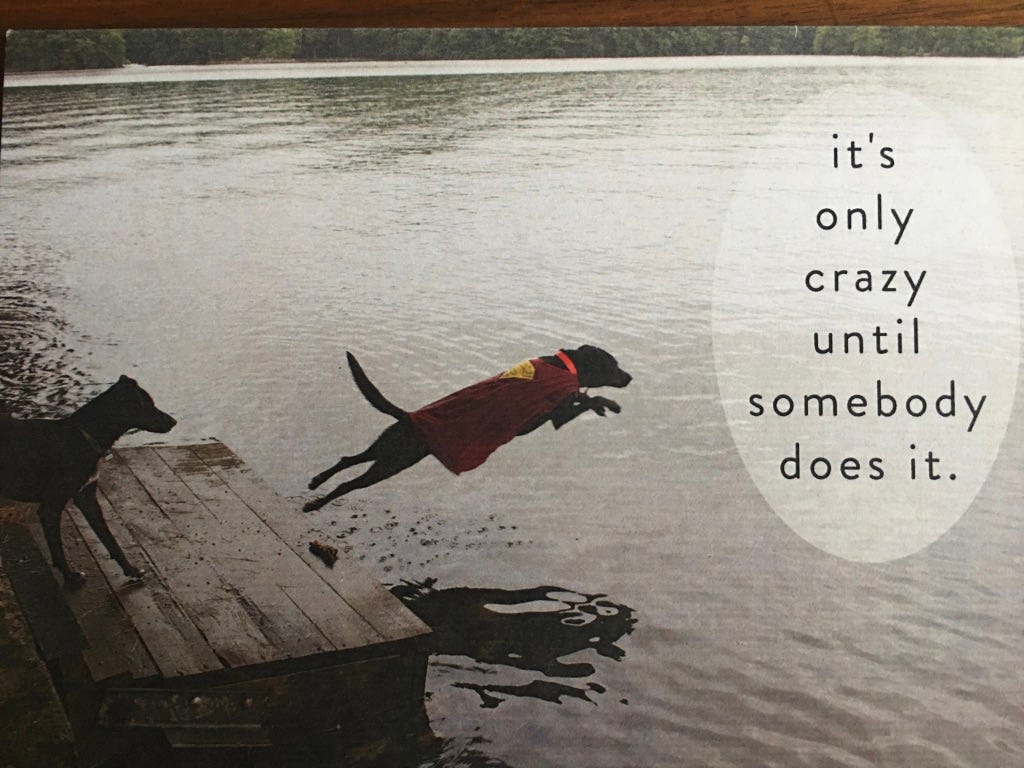🐇🐇first-of-the-month-luck, and Happy New Year greetings from newShrink!

With Solstice just past and Epiphany nearly a week away, it’s still plenty dark out there, except for that star and its companions.
Capturing a sense of this is a share from friend and Pacifica eco-psychology professor Betsy Perluss, who led our grad-student cohort’s amazing inner-nature explorations in contexts of wild-outdoor-nature and its settings:
This newShrink is a final holiday Postcards edition, in part to give a bookend close-out to the season with some attention to psychological, soul and other dimensions of New Years and Epiphany. Next week’s return to the News Notebook focus is sure to have abundant material to ponder from across the news-scape.
Especially with this year’s several first anniversaries looming on the news front, by this time next week the news cycle will be consumed if not utterly hijacked by revisiting, coverage and hearings about last year’s violent attack at the U.S. Capitol. Which is appropriate and merited.
Yet that debacle occurred last January 6, day of the Epiphany not only in the Christian world but actually across secular and pagan cultures both current and ancient. It absolutely galls me for our collective and individual focus and the associations we make going forward, in the first week of the year and arrival of Epiphany, to be forever tied to the horrific soul-sickening TV news footage, images and actions from that day.
For me New Year’s week and Epiphany are welcome anticipated season finale (even beyond the ritual relief of clearing out dead evergreens and too much stuff.) As I usually tend more pensive than partying at New Year’s, some treasured elements are:
🔷 all of the light-and-shadow/darkness connections with depth psychology,
🔷 the hopeful-faithful story journey of the Magi-strangers toward a mystery, guided only by a star,
🔷 rich Epiphany lore from the classical mythology and pagan versions of the story,
🔷 the array of theatre, arts and literature that both depict the story of Epiphany and/or develop and apply the felt-experience of epiphany as the characters’ and stories’ pivot/turning points recognizable to audience/readers,
🔷 writers and thinkers who have pondered and developed the idea and felt- experience of epiphany as a psychological process, the turning points in our own situations and stories; and finally
🔷 the natural interplay between New Years and Epiphany’s common themes of both linear and eternal-cyclical time, new beginnings, uncharted paths ahead, synchronistic epiphanies and both the tensions and leaps of faith they generate.
So these themes are the focus for this week’s gathered images, quotes, and vignettes from various sources, winding up with a few of my own thoughts.
Note: For time and space I haven’t included detailed references or links here. I’ll post them on the website, browsable at newshrink.substack.com, and please let me know if I can suggest specific material you’d like more about.
🔵
epiphanies
First, some definitions (from a consensus of major dictionaries), the word epiphany is derived from the Greek epiphaneia, which means manifested, or showing.
…in religions
The original uses of the word arose from both the familiar Christian Christmas story marking and celebrating the arrival of the Biblical Magi who follow a prominent star from afar to honor Jesus and other mythological pagan stories with remarkably similar elements.
Particularly with the story of Magi following the star — in which the phenomenon of their internal felt-experience is manifest in the external world — the idea of the experience of epiphany illustrates in simple familiar terms Jung’s concepts of the soul spark that is synchronicity. Biblical and many other religions’ texts are rife with examples of the faithful following of such external manifestations and messengers in the external world. Just a few examples in the Christian context are the Annunciation to Mary, Moses and the burning bush of the Old Testament, and many if not most of Jesus’ parables. Whatever else these accounts are, as William James and others have noted, they arose out of humans’ efforts to describe and understand phenomena they were experiencing.
The capitalized-version Epiphany has come to refer to the religious celebration date, now primarily in Christian context and in commemoration events.
… in literature and the arts
The second, lower-case version of epiphany has also become a quite common description of both the literary device and the felt psychological experience of the turning point in the story and/or character/oneself.
“Our epiphanies are those moments where we have realized awareness, a new knowing, after which events are seen through the prism of this new light.” (from literary devices.net.)
James Joyce’s ahas
For the ground-breaking Irish novelist Joyce (a contemporary of Jung, by the way), literary epiphanies began as a non-fiction prose genre — a series of short “snapshot” pieces without much connective narrative, which he wrote between 1898 and 1904. Epiphany was figuring prominently as a literary device by the time he was working on earlier versions of his famed Portrait of the Artist as a Young Man with autobiographical character Stephen Dedalus, who also reappears in his later Ulysses. (The following is from literary terms.com.)
Joyce sounds very like Jung in his observation that our epiphanies are “a sudden and momentary showing forth of one’s authentic inner self.”
Joyce’s brother Stanislaus’s letters describe them more like Freudian slips, ways in which we unconsciously “give ourselves away.” (A view that also echoes Jung, in his ideas about how the shadow of the unconscious appears in our lives, unbidden.)
Joyce’s description of the epiphany as the aha moment sounds like Jung’s soul spark, the turning point akin to those of Dante as he makes his Divine Comedy descent and return through hell and back. From Joyce:
“[Then] the soul of the commonest object, the structure of which is so adjusted, seems to us so radiant.. Unlike foreshadowing, epiphany occurs not necessarily by connection with the rest of plot or story, and suddenly, as if divinely inspired.”
Here, Joyce’s ideas echo those of Rudolph Otto and William James on the nature of numinous experiences:
“Characters are rooted in everyday life, but epiphanies allow them to rise above ordinary consciousness in order to have revelations and realizations that demand a changed perspective.”
And of course these described experiences of fictional characters apply to us as well — that is what brings them to life for us and makes the telling of story so powerful for connection, creative problem-solving and transformative change.
William Shakespeare
One of Shakespeare’s most-performed plays is The Twelfth Night, set and often performed as part of celebrations of Epiphany. As a comedy it’s generally expected to have a happy ending, which it does for most of its many characters.
… in psychology
Some of my thoughts:
🌀 Understanding and responding to epiphany is useful in both the clinical psychotherapy setting and in working with our own life narratives, feelings, aspirations and choices.
🌀 In my view and experience epiphany is very much like, or may be an example of, synchronicity; both are numinous, often accompanied or heralded by sudden physical sensation such as shivers, tears, temperature or voice changes.
🌀 And when two or a few other people are discussing/experiencing together there is often/usually a shared, even when not described in words, experience in the interactive field between them.
🌀As mentioned above, the familiar Epiphany story from Christianity has many common threads across different cultures and faith traditions — some much older, the Greeks, for example.
Which brings us to the Greek god Aion depicted at the top of today’s post.
… right-in-time
Borrowing a title from hauntingly gravel-voiced Lucinda Williams, here at the cusp of new year and old seems a natural point for considering the core concepts and imagery of time in depth/soul-focused psychology. Most significant is the constant interplay and dance of dynamic tension between linear Chronos (clock and “resume”) time and cyclical eternal or soul time.
🔷 This latter was apparently so important for Jung that he adopted mythological Greek god Aion as descriptive title metaphor of his volume 9ii (a Part 2 volume) of the Collected Works. In the Greek pantheon Aion is god of Eternity whose domain includes the cyclical time of the zodiac year. He also is often depicted and considered to be standing “over” Chronos or linear time.
🔷 With some astonishing parallels to the familiar Christmas and arrival of the Magi Epiphany story, Jung presents a detailed account of the pagan festivals held on the night of Epiphany January 5/6, in Alexandria and elsewhere according to the writings of Epiphanius.
🔷 (Epiphanius was a 4th Century Bishop of Salanis, Cypress, considered a saint and church father of both Eastern Orthodox and Roman branches of the Catholic Church.)
🔷 Included in the celebration of the Korian [virgin mother] festival, participants stayed up all night with many dances, songs and rituals with torches, at the end of which at cock’s crow there is descent to serve up a carved wooden image on a litter, with a gold cross on the honored figure’s forehead, and the figure is carried many times during ceremonial rituals.
According to Epiphanius, “If you ask them what this mysterious performance means, they answer, ‘Today, at this hour, the Kore, that is to say the virgin, has given birth to the Aion [eternal god].’’
🔷 (And by the way, Epiphanius says he reports these not as examples of parallel — or in Jung’s terms, archetypal — rites in the pagan world of his time… but instead as “evidence” of the universal transformative power of the Christian birth of Jesus or Aion.)
🔷 Even from a strictly journalistic, not to mention a scholarly, standpoint, this begs the question of which came first to influence the other: The pagan Aion or the Christian Jesus. (If, in fact, either of them did.)
🔷 Or as Jung might suggest, maybe both are simply true, archetypal and therefore numinous… from the realm of soul and the deeply sacred. (As archetypal stuff generally is.)
🔵
Besides such examples from religions, mythology as well as classic fairytale — or in today’s world theatre, film, and pop-culture TV and social media — in depth psychology metaphors, characters and images from systems such as Tarot, the Chinese I-Ching, and alchemy can be similarly useful. They give us reference points to better understand our inner experiences and relationships by relating to archetypal human stories, characters and situations that are common across cultures and history.
Such tools help us discern and work out themes and patterns to inform our choices and problem-solving, both in the psychotherapy process and in our own daily lives. (There are excellent scholarly resources for learning about the history and complexity of each of these, as well as for recognizing the inevitable trivializations of them to parlor games and fortune-telling.)
greater fools…
…in depth psychology
Coming into the new year 2022, it struck me that in the 78-card Tarot deck, card number 22, The Fool, is a pretty important one: It’s actually both #0 and #22, the “first and the last/alpha and omega” of the 22 major arcana life situations. A few general notes about the deck:
🔷 The arcana can be understood as the bigger-picture, more myth-level themes, characters and human stories.
🔷 They are in contrast and addition to cards in each of the four suits. And yes, these correspond and are linked historically to suits in our playing-card decks today. They represent more mundane, daily life stuff like that of fairytales (or maybe today’s TV sitcoms or Facebook posts.)
🔷 I’ll say more in my comments below about my own school experience and training with the Tarot, particularly The Fool.

🔷 The Fool is associated with: New beginnings; faith in the future without knowing what to expect (as with Jung’s just “taking the next right step” as described in a recent post); creativity, originality, spontaneity; and belief in the universe/dwelling in eternal-cyclical time. (Sounds like a lot from number ‘22!)
🔷 Psychology, particularly of the depth/soul-engaged kind, has many references, images and theoretical processes involving the leaps of faith aspect of acknowledging and engaging with the unconscious soul, including its least-known shadowy aspects.
🔷 To me the above depiction of how The Fool holds this leap-of-faith willingness is psychologically accurate, for he is definitely both nearing a precipice and happily and hopefully making his way forward. (While a few leaps of faith might present a clear view of what’s ahead with elegant choice implied, both in practice and in life my observation is that far more often the “leap” is more like an unanticipated stumble or abduction and descent — as with Dante — and the faith part having to arrive more in midair!)
🔷Especially in the era of so-called positive psychology, the phrase leap of faith can take on a jaunty or what-the-heck tone that to me doesn’t capture the complexity, enormous discipline and painful holding of opposites it can involve to a person going through it.
🔷 Even sound-bite versions of seminal ideas from the mythologist Joseph Campbell, whose work has so influenced depth psychology, can be used mistakenly to emphasize adventure minus the hard work. For example, his “Follow your bliss…” can seem more like this:
… while in depth psychology process the “holding the tension of opposites” that the soul demands can look and feel more like a Coach Yogi Berra conundrum:
“When you come to a fork in the road, take it.”
🔷 This one from Campbell is a little better at capturing both the inspirational push and the reality of a chasm.
“A bit of advice given to a Native American at the time of his initiation: As you go the way of life, you will see a great chasm. Jump. It is not as wide as you think.”
(Well, if there weren’t a chasm, it wouldn’t be much of an initiation, epiphany or a leap, now would it?!)
🔷 Even with Danish philosopher Kierkegaard, whose writings are most associated with the concept leap of faith (although he apparently never actually used the phrase) there’s a general misunderstanding/misrepresentation that he is advocating faith in opposition and superior/preferable to reason, intellect, science, logic. While I am no expert on Kierkegaard, in my limited understanding he’s lamenting what he viewed as the over-intellectualized secular version of Christian faith in his time in Denmark and sought to make the case for soul-engaged faith as a deepening and expansion of reason… rather the best of reason.
🔷 As usual I like the way ever-pithy James Hillman captures both aspects of this archetypal Fool with:
“Sooner or later something seems to call us onto a particular path, this is what I must do, this is what I’ve got to have, this is who I am…“ And yet, “You don’t know what you’re going to get into when you follow your bliss.”
…in literature and the arts
Beyond psychology, two other images and quotes about the archetypal Fool come to mind, one from literature and one from fairly current popular culture.
🔷 The first, which I’ll mention only briefly here for time and space reasons, is this description of title character/protagonist Jay Gatsby by narrator Nick Carraway, from novelist F. Scott Fitzgerald’s The Great Gatsby:
“If personality is an unbroken series of successful gestures, there was something gorgeous about him, some heightened sensitivity to the promises of life, as if he were related to one of those intricate machines that can register earthquakes ten thousand miles away. This responsiveness had nothing to do with the flabby impressionability which is dignified under the name of ‘creative temperament’ —it was an extraordinary gift for hope, a romantic readiness such as I have never found in any other person and it is not likely I shall ever find again. No—Gatsby turned out all right in the end…”
I want to revisit Gatsby and Fitzgerald more in a later post, with more time and space and pegged to some current news contexts. I lament that over time and with various film versions’ trivializations, particularly of the Gatsby character, Fitzgerald’s psychological savvy and nuanced takes on culture, wealth and social patterns very relevant today are lost. So, later…
🔷 And finally, this favorite riff on the Greater Fool theory (often applied to investing) by character Sloan Sabbith in Aaron Sorkin’s HBO series The Newsroom. (It’s browsable on You Tube.)
some closing comments…
🌀About those 🐇🐇 first-moments-of-the-month-lucky “rabbit-rabbits”… if any of you do, or know much about, this monthly good-luck ritual of “first words spoken the morning of the first day of a new month” I’d love to hear from you! I've now done it for decades, when I can remember to, as part of what was a bond with a now-deceased elder friend. As I understand it, it’s of British and New England origins and just a calling on of rabbits as a good-luck charm, like a rabbit’s foot. I enjoyed reading that FDR practiced the rabbit-rabbit monthly ritual for decades and carried a rabbit’s foot. (In practice I do find this more easily an owl thing a moment after midnight than lark, remembering first thing on morning waking!)
🌀On use of Tarot (as well as other such archetypal systems as alchemy) in depth psychology and psychotherapy at Pacifica I was blessed to have full quarters of study with professors such as Dr. Lionel Corbett, MD and longtime Jungian analyst as well as author and teacher.
🌀The Fool card, #22 and #0 specifically, is the one that my class-cohort of about 25 randomly drew as our symbol and sort of a mascot for our entire two years of monthly intensive class study together as an intact group in the clinical Masters in Counseling program. We became familiar with a lot of Fool dimensions, one another, and we even wrote a book of each our personal life fairytales together.
🌀 The following seems hard to believe, although I know in my head it’s how the psyche works. Only just now, winding up these New Years ‘22 and Epiphany thoughts and writing, did I realize it’s exactly 22 years since my dad — beloved and loving of me, in every way checking the “successful man” boxes, a once-creatively-gifted-inquisitive wit of a person — left us and the world, at just 72 and way too soon. (His own dad, my grandfather I have mentioned here, had lived vibrantly past 100.) Dad’s passing was at the 1999 Y2K threshold of turn-of-the-millenium New Year’s weekend, a week before my parents’ January 6/Epiphany wedding anniversary, a couple of years short of the 50th. (Whew. I decided not to edit-out this personal piece, for it illustrates how sometimes-powerfully the material served up from the unconscious psyche can be of the gasp-inducing, “can’t-make-this-stuff-up,” variety.)
🌀About those challenging, flying-leap-of-faith thresholds (precipices?) of initiation that soulful individuation process periodically puts in our path... Jung said, accurately I think, that not everybody individuates — or even has the slightest desire to! It’s disruptive, the thresholds are increasingly more likely to put us way out of our comfort zones than “playing to our strengths.” I love the late Jungian Marion Woodman’s observation that none of us gets up one morning and says, “hey, I’m going to go become a deeper and more whole person today”… that instead “most of us must be dragged to it kicking and screaming like pigs to the slaughter!”
And yet… (a thousand “and yets”…) Both from working closely with people who brave the process in practice and from my own life observation and experience, I believe — with an intensity almost like superstition — that each of these thresholds, flying-leap-of-faith-cliffs presented in our paths, is a gift. And each time we manage to duck or dodge or backpedal or bypass the threshold, we and the life-sparks that define us are somehow a little diminished, our lives maybe even shortened.
🦋💙
So today I leave you with Happy You Year wishes for heightened sensitivity to the promises of life… soundtrack with plenty of musical morning Joy… and Coach Berra’s infinite depth-psychology wisdom as needed: When you come to a fork in the road, take it!
And, that is all I have! Talk to you next week in News Notebook.
🦋💙tish
… it is important that awake people be awake,
or a breaking line may discourage them back to sleep;
the signals we give — yes or no, or maybe —
should be clear: the darkness around us is deep.
— William Stafford, “A Ritual to Read to Each Other”









